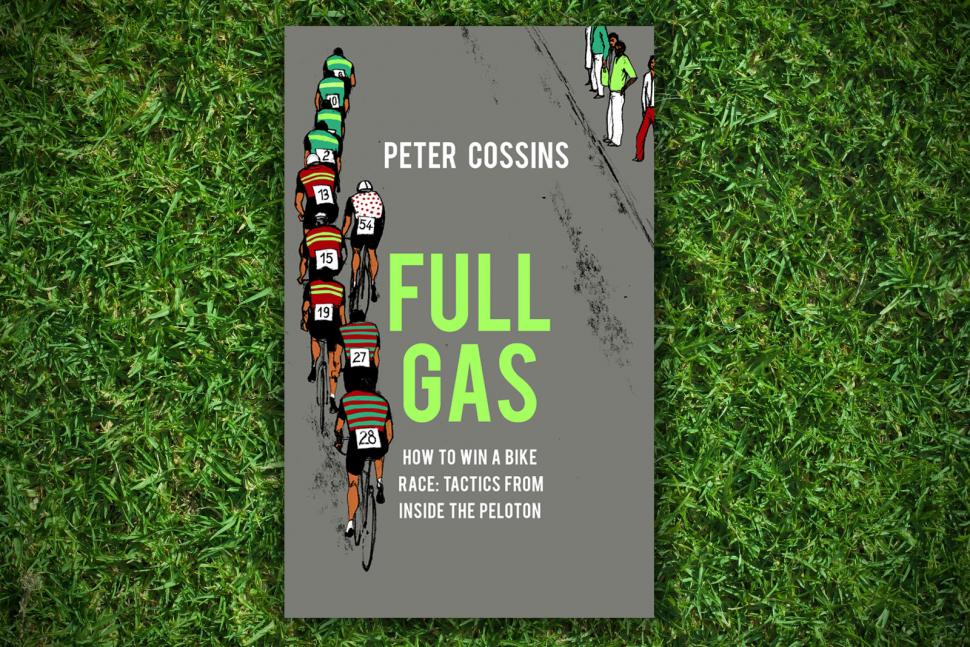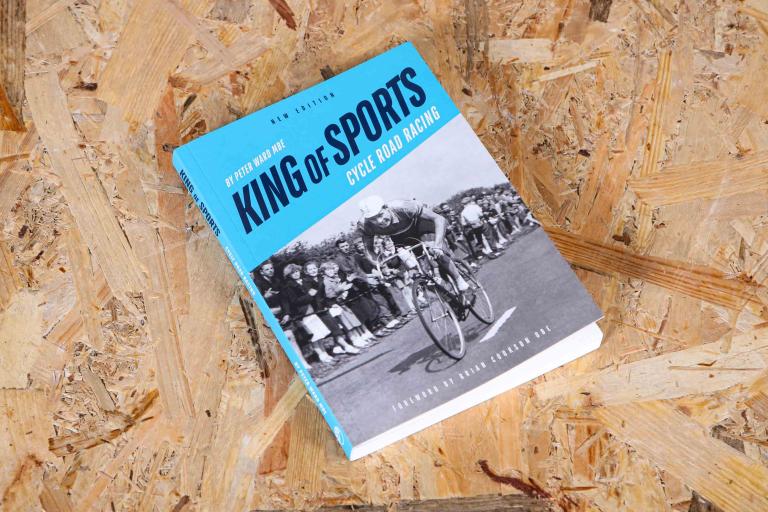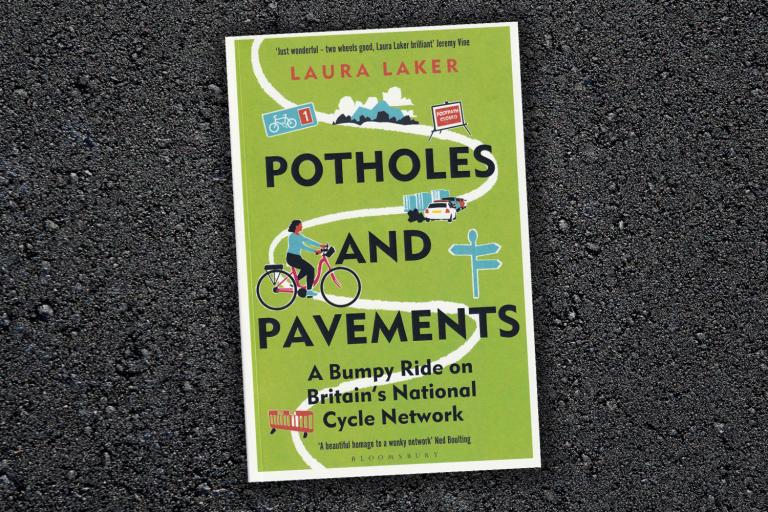- News
- Reviews
- Bikes
- Accessories
- Accessories - misc
- Computer mounts
- Bags
- Bar ends
- Bike bags & cases
- Bottle cages
- Bottles
- Cameras
- Car racks
- Child seats
- Computers
- Glasses
- GPS units
- Helmets
- Lights - front
- Lights - rear
- Lights - sets
- Locks
- Mirrors
- Mudguards
- Racks
- Pumps & CO2 inflators
- Puncture kits
- Reflectives
- Smart watches
- Stands and racks
- Trailers
- Clothing
- Components
- Bar tape & grips
- Bottom brackets
- Brake & gear cables
- Brake & STI levers
- Brake pads & spares
- Brakes
- Cassettes & freewheels
- Chains
- Chainsets & chainrings
- Derailleurs - front
- Derailleurs - rear
- Forks
- Gear levers & shifters
- Groupsets
- Handlebars & extensions
- Headsets
- Hubs
- Inner tubes
- Pedals
- Quick releases & skewers
- Saddles
- Seatposts
- Stems
- Wheels
- Tyres
- Health, fitness and nutrition
- Tools and workshop
- Miscellaneous
- Tubeless valves
- Buyers Guides
- Features
- Forum
- Recommends
- Podcast
review
 FullGas
FullGas£16.99
VERDICT:
If your 'strategy' is to better understand cycle racing, then a good 'tactic' would be to read this book by Peter Cossins
Weight:
450g
Contact:
At road.cc every product is thoroughly tested for as long as it takes to get a proper insight into how well it works. Our reviewers are experienced cyclists that we trust to be objective. While we strive to ensure that opinions expressed are backed up by facts, reviews are by their nature an informed opinion, not a definitive verdict. We don't intentionally try to break anything (except locks) but we do try to look for weak points in any design. The overall score is not just an average of the other scores: it reflects both a product's function and value – with value determined by how a product compares with items of similar spec, quality, and price.
What the road.cc scores meanGood scores are more common than bad, because fortunately good products are more common than bad.
- Exceptional
- Excellent
- Very Good
- Good
- Quite good
- Average
- Not so good
- Poor
- Bad
- Appalling
Most of us would agree that 'watching a bike race can baffle as much as entertain', but we also recognise that 'the intricacies and complexities of cycling are what makes it so appealing'. In Full Gas, Peter Cossins provides the information you might need to help understand what tactics you might be witnessing in a race, and why.
- Pros: The most comprehensive discussion of race tactics available today
- Cons: Of more benefit to spectators than an aspiring racer
At some point in a race, a rider or a team will do something that a commentator might refer to as a 'textbook move' – but does such a textbook actually exist? I have several books about racing that include a few pages on race tactics, but I am not aware of any book devoted exclusively to the subject. I believe that Full Gas is both the most thorough and the most up-to-date work on the matter, making it the closest thing to such a textbook available today.
Cossins has good pedigree as a writer, with several books to his name, some of which we have featured, such as Alpe d'Huez, Ultimate Etapes and Monuments.... However, his status as a master tactician is less well proven, so he enlists the help of an extensive list of professional riders and team directors who granted him their 'time and insight'.
The result is not a dry manual of race tactics, but a very readable explanation of what might be going on during a race, supported by numerous anecdotes from riders and examples from past events, along with apposite excerpts from a few suitable books – most notably rider biographies.
You won't find any diagrams or charts, so if (for example) you are trying to learn how to take part in an echelon then you can't rely on this book alone; but if you want to understand when being in an echelon would make sense and why, then this book is the answer. That makes it a valuable reference for anyone trying to understand a race, whether from the saddle or an armchair.
A tactic is deemed to be 'the concrete methods that are employed to guarantee that [a] strategy is carried out successfully', where 'strategy defines a long-term objective, and the plan set out to achieve it, a mission statement, if you like'.
There are times when it might seem obvious to us what a given rider should be doing, but this book reminds us that not only can choosing the right tactic be hard to get right, but getting the timing right is even harder – and even then you still need to have the legs to make it succeed. What sets cycling apart from other sports is the level of energy saving that can be achieved from drafting – or the extent to which wind resistance works against lone riders at high speeds.
One of the most visible (and exciting) tactics in modern cycling is surely that of well-organised sprint trains battling it out in the final kilometres of a suitable stage. Team sprinters have always been receiving help from team mates, but Cossins quotes Marc Sargeant who asserts that with Saeco, Mario Cipollini experienced 'the first team that was completely devoted to a sprinter'.
Seeing a sprint played out in such a way is something that we take for granted today, but Cossins demonstrates that such an outcome is only one example of changing circumstances: 'tactics have changed beyond recognition. Pacing, teams, sprints, mountains, descents, technology and many other factors have all necessitated a new approach, and as a result tactical change has been continual.'
The need for that 'new approach' continues, and in an interesting chapter called 'Is technology killing tactics', Cossins reminds us that 'once it was derailleurs, tri-bars and helmets, now it's disc brakes, radios and power meters. As in many sports, the advent of new technology has always divided opinion in cycling'.
Not all tactics are obvious: in a chapter called 'Dirty Dealing', Cossins notes that 'it is, understandably, not easy to establish the level of deal-making in contemporary racing', but we can be sure that is happening – or should we say 'still happening'. As Giles Belbin covered in his book about the World Championships, 'national loyalties conflict with trade team commitments', making it the most obvious race in which to see the 'seedy side to cycling, with races and riders bought and sold, and dodgy deals.'
Sometimes the tactic is about surviving rather than winning, and Cossins gives us an insight into life in 'l'autobus', 'il gruppetto', or 'the laughing group'. Simply trying to finish before the time limit presents its own set of challenges, so at the back of the race all the riders 'share not only the pacemaking, but water, food and encouragement.'
> 26 books every cyclist should have on their shelves
A frequently overlooked role in the successful deployment of any tactics is the position of road captain within a team: with a lower profile than the team managers in the following cars, they are 'the sporting director's eyes and ears in the bunch, making sure orders are carried out [and] making tactical decisions when the DS is not able to do so'. After reading this I can't help thinking that the associated road captain could provide a much more informative post-race interview than the actual winner.
Nicolas Portal gives Cossins considerable insight into his work as a Directeur Sportif with Team Sky, and I found this one of the most informative parts of the book: it is all about getting the right information and making the right decision – all under far from ideal conditions.
In future, when anyone is referring to a 'textbook move', he or she can now quote a chapter and page number, and we can all 'better understand...the constantly evolving and frequently quite exquisite tactical puzzles that every bike race sets and every rider within it contributes to'.
Verdict
If your 'strategy' is to better understand cycle racing, then a good 'tactic' would be to read this book by Peter Cossins
road.cc test report
Make and model: Full Gas by Peter Cossins
Size tested: n/a
Tell us what the product is for
From Yellow Jersey Press:
Riding as fast as you could for as long as you could was the main tactic in the early days of road racing when Grand Tours could be won by hours. Now a minute's delay thanks to a puncture could ruin a rider's chances over a three-week race and the sport is described as nothing less than chess on wheels. The intricacies and complexities of cycling are what makes it so appealing: an eye for opportunity and a quick mind are just as crucial to success as a 'big engine' or good form.
So how do you win a bike race? How do you cope with crosswinds, cobbles, elbows-out sprints, weaving your way through a teeming peloton? Why are steady nerves one of the best weapons in a rider's arsenal and breakaway artists to be revered? Where do you see the finest showcase of tactical brilliance? Peter Cossins takes us on to the team buses to hear pro cyclists and directeurs sportifs explain their tactics: when it went right, when they got it wrong – from sprinting to summits, from breakaways to bluffing.
Hectic, thrilling, but sometimes impenetrable – watching a bike race can baffle as much as entertain. Full Gas is the essential guide to make sense of all things peloton.
Tell us some more about the technical aspects of the product?
Title: Full Gas
Author: Peter Cossins
Publisher: Yellow Jersey Press
Date: 7/6/18
Format: Hardback
Pages: 336
ISBN: 9781787290198
Price: £16.99
Rate the product for value:
6/10
Acceptable value at full price, but 'deals' are available already; at £10, the Kindle version offers little saving.
Tell us how the product performed overall when used for its designed purpose
Goes a long way to help you understand the tactics going on in a race, and why they're used.
Tell us what you particularly liked about the product
The input from management (ie non-riders) in teams.
Tell us what you particularly disliked about the product
Note enough explanation about how to actually carry out certain tactics.
Did you enjoy using the product? Yes
Would you consider buying the product? Yes
Would you recommend the product to a friend? Yes
Use this box to explain your overall score
A welcome (if unusual) addition to books about cycle racing; it might seem too much of a niche subject to have broad appeal, but it's very readable and informative.
About the tester
Age: 55
I usually ride: My best bike is:
I've been riding for: Over 20 years I ride: Every day I would class myself as: Expert
I regularly do the following types of riding: commuting, touring, club rides, sportives, general fitness riding




Right wing politicians are working for big oil. They chase the dollar representing only themselves,
20 zip up sandwich bags from Tesco are currently £2, or 10p per bag. They work just as well and there's even a significant weight saving over this...
You know its just maths right? Percent represents a fraction...
Another front garden sacrificed to cars.
A man called me a terrible mother for how I was taking my kids to school (Metro)...
Well it appears Velogames isn't overly good at getting races up too quick either. ...
Can't that be resolved with different gearing though? (Smaller chainring)
1981 Raleigh brochure on EBay - a missing link in the catalogues available on line. Bidding starts at £35. ...
It's probably in Romania by now, or Poland, but a picture would certainly help, size too?
Sounds like spam... which bike was used for the kit, please at least post pictures with the end result.